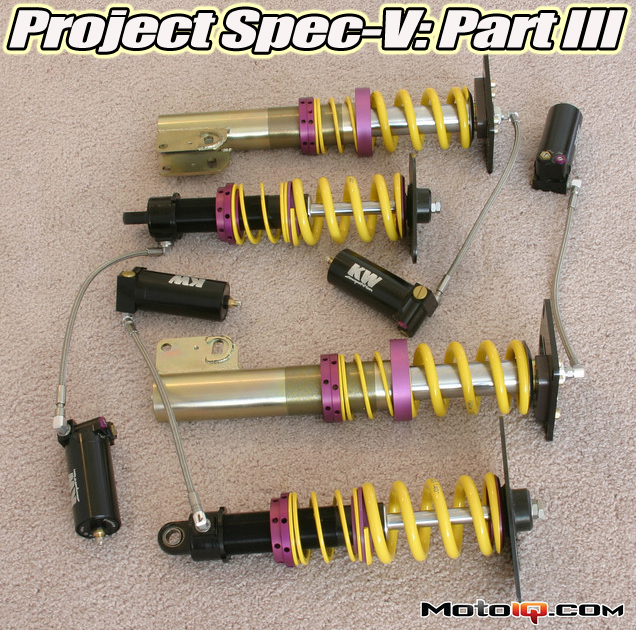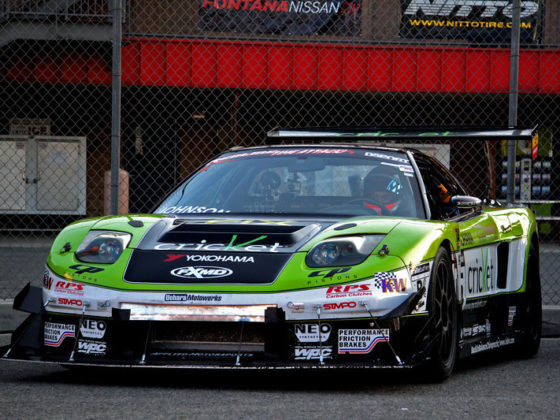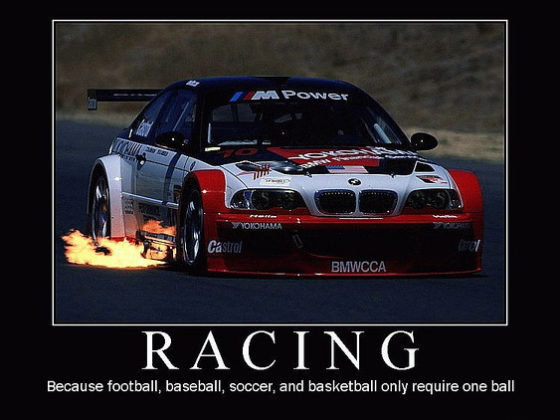
No Respect, Project Nissan Sentra Spec-V part 3, Building a Race Ready Suspension System
By Mike Kojima
To see older editions of this series click here! There are 5 elements that have to work well in a successful time attack car. In order to win, a car has to have lots of power, lots of aerodynamic downforce with minimal drag, good suspension, anchor-like brakes and sticky tires. Of these 5, suspension is the most important system for a winning time attack car. Getting the best possible handling is more important than eeking out every last bit of power from the engine. Without good suspension you cannot get the most out of the tires, brakes, aero or engine.
The most important part of a time attack cars handling package is the coilover/shock system which is the platform of the cars chassis. You must have a wide range of adjustability of spring rate, ride height and damping to be able to set up the car for the tracks condition and for the driver’s style.
 |
| The front KW Motorsports damper features state of the art construction for the ultimate in performance |
For our coilovers we selected KW Suspensions 3-way adjustable race damper package since we have a lot of experience with them. The KW race dampers are the shocks of choice for the Falken tire drift team, Dai Yoshihara’s time attack team and Billy Johnson’s FX Motorsports Development NSX, three groups that MotoIQ works with frequently. KW’s racing coilovers are quite sophisticated featuring independently adjustable damping for rebound with separate discrete parametric adjusters for high and low speed compression damping.
 |
| The rear KW Motorsports damper has a short overall length for the amount of wheel travel, important as the Sentra has little room in the back for a longer shock body with a low ride height. |
Low speed compression refers to shock shaft velocity as expressed in inches per second. Low speed is defined as a shaft velocity of 0 to 3 inches per second. Low speed compression damping adjustment mostly helps control large body motions such as body roll, lift and squat. The low shaft velocities are the range that a driver can feel the most as well. Low speed compression adjustment greatly affects the cars responsiveness to the driver’s steering input in the first half of a turn. Not enough low speed compression damping and the car is unresponsive to driver input with large body motions. Too much and the car hops around loosing traction. Low speed adjustment is important for controlling body motion so the cars aero package works consistently, especially in pitch.



